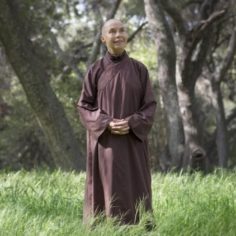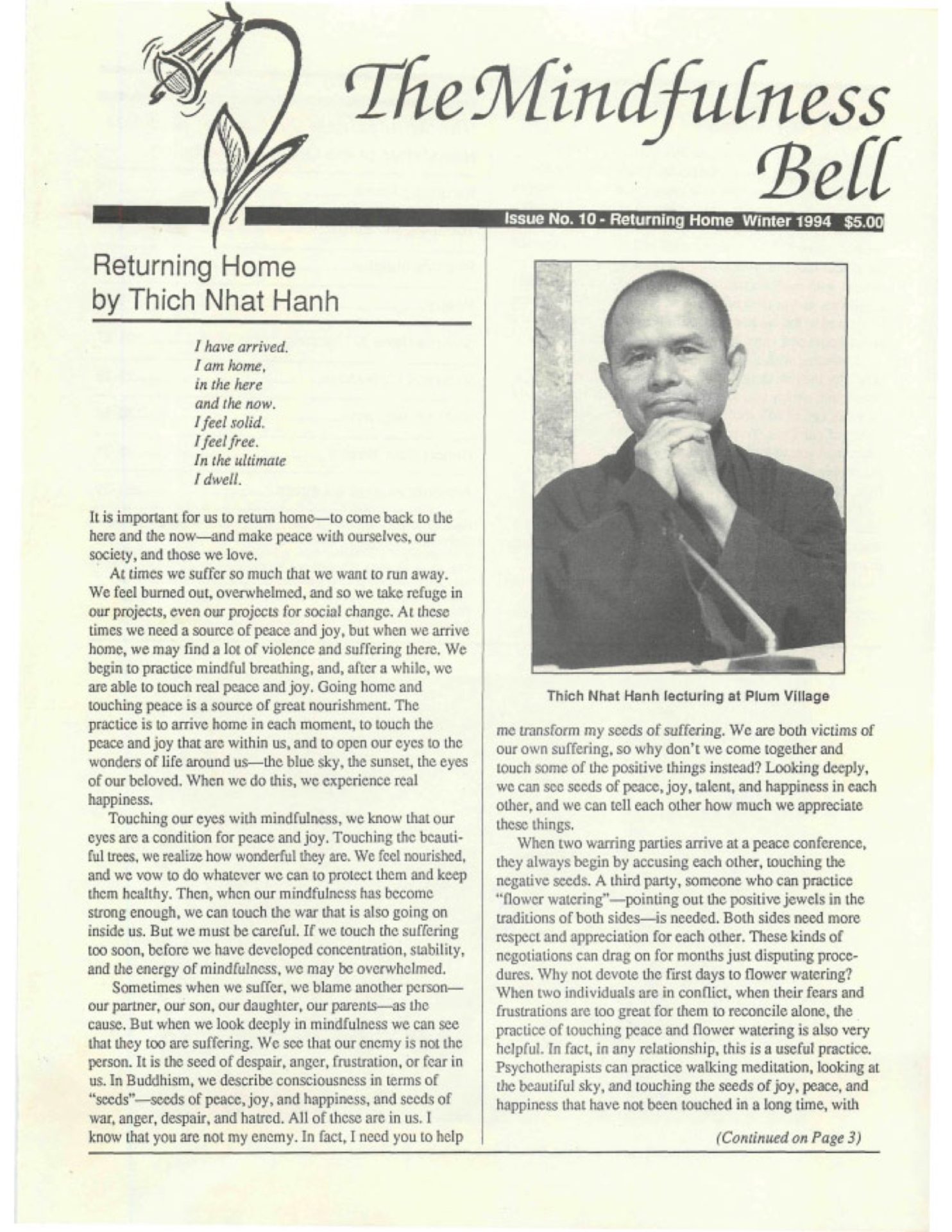By Sister Jina van Hengel in January 1994
For some of us Christmas brings up happy memories, for others it brings up either painful ones or no memories at all. Christmas, in and of itself, is neither pleasant nor painful. If we can really see that our perception of Christmas is often based on how we’ve experienced it in the past, we can be free to turn Christmas into whatever we like.
By Sister Jina van Hengel in January 1994
For some of us Christmas brings up happy memories, for others it brings up either painful ones or no memories at all. Christmas, in and of itself, is neither pleasant nor painful. If we can really see that our perception of Christmas is often based on how we've experienced it in the past, we can be free to turn Christmas into whatever we like. We can continue nourishing it as a happy event or change it from an unpleasant event to a joyful and meaningful one.
Christmas can be a time to look at our cultural roots and strengthen them. If there are unpleasant or difficult elements in our culture or tradition and we try to cut ourselves off from them, we are not going to change them. If we want things to be different we have to continue looking into the elements of our culture or tradition to see what they are made of. If we truly want to find our home, we have to look into the one place we call our home. We must embrace and look deeply into all we find there to really see what this home is like. Only then can we change it. If we reject any element in our culture, we cannot be truly happy. We will feel lost and without roots.
When a tree is planted in the earth, it is connected to the earth by its roots. The whole of the tree is nourished and supported by the earth, and the earth is nourished and supported by the whole of the tree. Roots are the connection where interactions and transformations take place. They are the energy that flows out of the trunk and into the earth, as well as into the sky, interacting with the sun, the clouds, and everything in the cosmos. When we cut ourselves off from something, we suppress the flow of energy. This blocked energy builds up inside us, the force of which makes us restless. We feel cut off from our culture. We don't feel at home, and we desire to be rooted somewhere.
We may go to a new country or find a new tradition to root ourselves in. Once in a new environment, we may accept what we like about our new "home" and consider irrelevant what we do not like: "This doesn't really pertain to me." This is another form of rejection, and it means that not all of the rooting energy is flowing freely. Although we call it our new home, we do not really feel "at home." Sooner or later our blocked rooting energy will need to be released. Only when this energy is flowing freely can we find a resting place, our true home.
The rooting energy and the means to release the obstacles that block it, are available right here and now. Many practices have been offered to help us tap this energy and let it flow freely, including conscious breathing and smiling, walking meditation, the Beginning Anew Ceremony, the Peace Treaty, and others. Through these practices, we take root in each other and everything around us. We grow together as a brother, a sister, or a family. Connected with everything, we can feel "at home" anywhere. There is a place to rest right inside us. When find our home we become like the tree, with interactions and transformations taking place through our roots. We are as firmly planted in our home as the tree is firmly planted in the earth and sky.

In the discourse on "Plucking out the Poisonous Arrow," the Buddha, while smiling and sitting beautifully, was shot by Mara with poisonous arrows. But as soon as the arrows touched him, they turned into flowers. Commenting on this, Thay advised us to practice diligently so that we could create a body like that. I didn't understand what kind of body Thay was referring to, so the following morning I decided to do a meditation based on this story. Sitting quietly and following my breathing, I imagined having a strong body that did not allow any arrows to enter. Sitting with stability, I saw that, indeed, the arrows did not enter my body. But I also saw that I was surrounded by heaps of broken and bent arrows. This was a rather different picture from the Buddha surrounded by flowers. Looking deeply I saw that the Buddha's body is the body of insight, which does not receive the arrows because as soon as they touch it, they are transformed into flowers. The "insight body" recognizes the true nature of the arrows, sees what they are made of and thus transforms them immediately. Arrows cannot enter the body because they no longer exist.
To develop or strengthen our "insight body" we have to practice. When this body becomes strong, our rooting energy flows freely. We stand like trees with our roots dug down into the earth and our branches stretched out connecting and interacting with all that is. Looking deeply, we see clearly what needs to be transformed for the benefit of all. When we look deeply into one place (country, tradition), we see all other places, and we can embrace them all.
Sister Jina van Hengel, True Wonder Adornment, leads mindfulness retreats worldwide and lives in Plum Village


